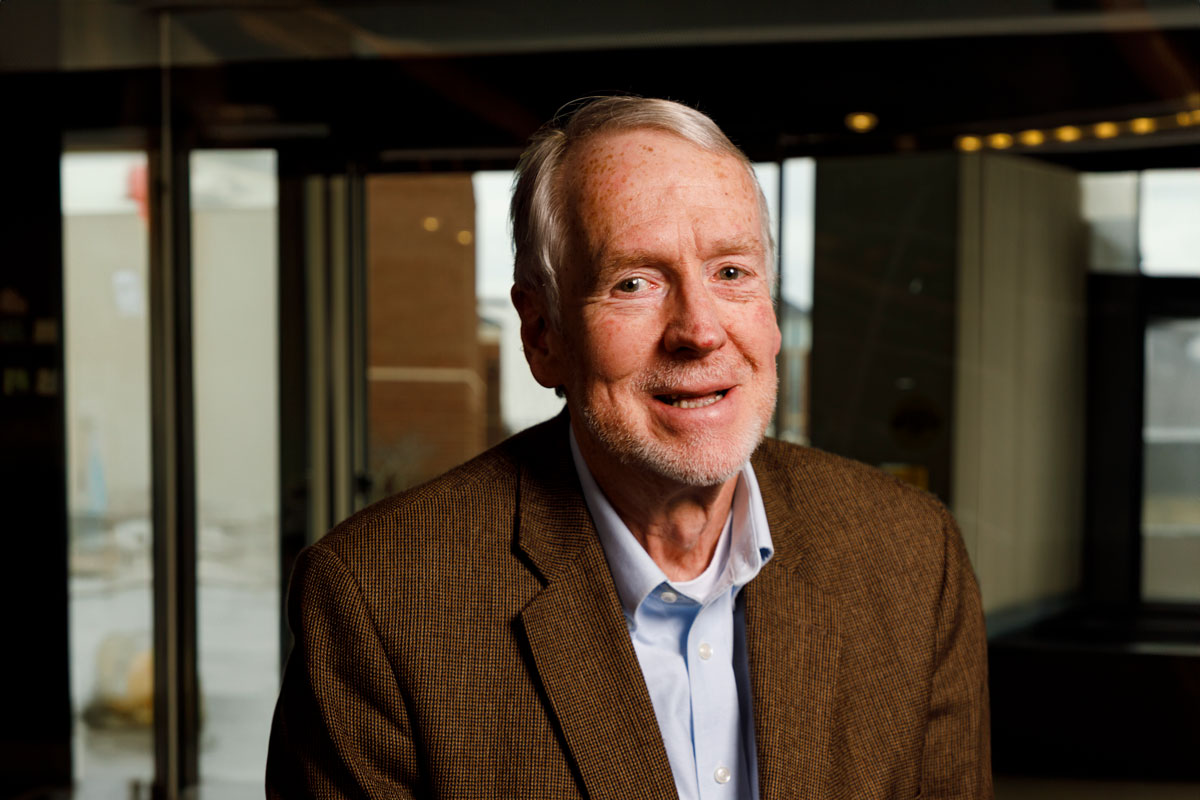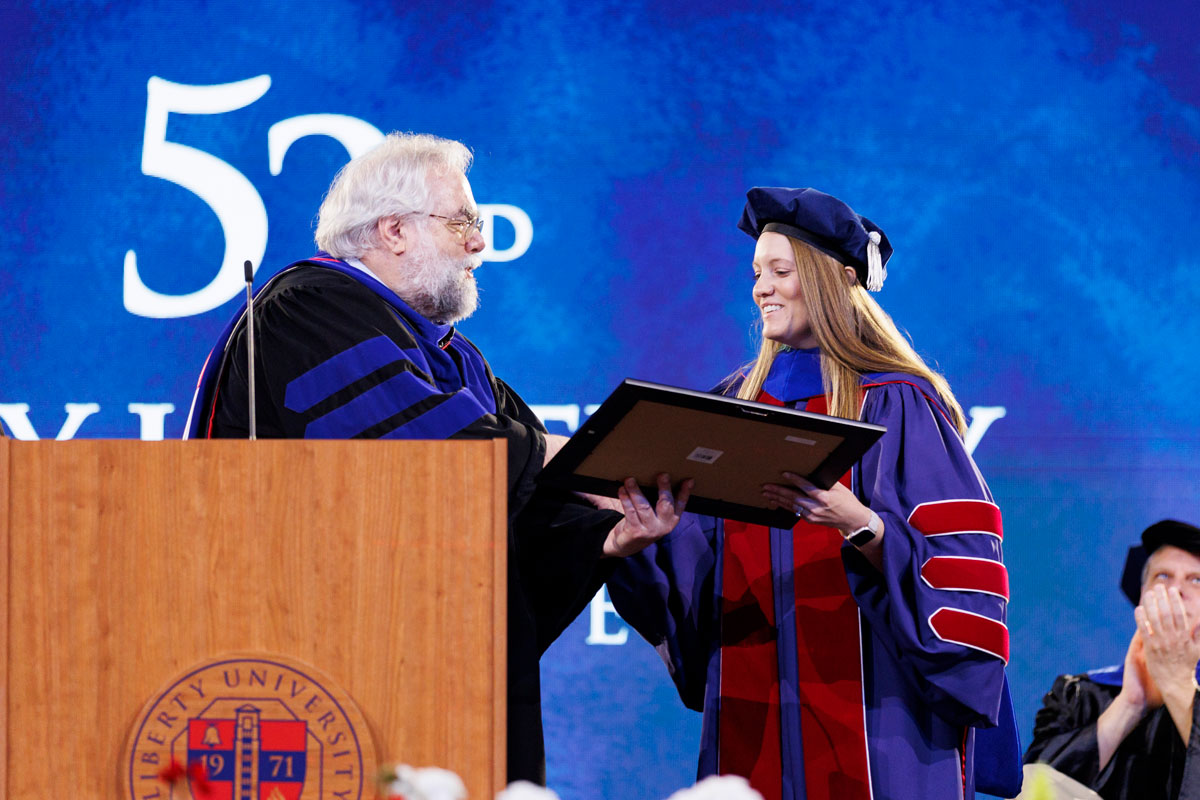Search News Archives
Filter News Articles
Additional Navigation
Students become part of history in Dead Sea Scrolls cave discovery
February 9, 2017 : By By Tobi Walsh/Liberty University News Service
On her hands and knees, 23-year-old Liberty University graduate student Christy Connell slowly crawled for hours through a narrow cave on the cliffs west of Qumran, near the northwestern shore of the Dead Sea in Israel, over a two-week span in January.
“In the smallest parts of the cave it was so narrow I had to crawl on my stomach,” Connell said. “It was pitch black. I couldn’t see anything in front of me. I was crawling over pieces of animal bones and gravel.”
Connell, who is pursuing her Master of Arts in History, was part of a team of six Liberty faculty members and students, led by Distinguished Research Professor Dr. Randall Price, who assisted in discovering evidence that shows Dead Sea Scrolls were stored there. While no physical scrolls were found, fragments of storage jars, scroll wrappings, string, and a piece of worked leather that was a part of a scroll were all found inside of the cave. This marks the first discovery related to the Dead Sea Scrolls in 60 years.
The finding of pottery and numerous flint blades, arrowheads, and a decorated stamp seal made of carnelian (a semi-precious stone) also revealed that the cave, known as Cave 12, was used in the Chalcolithic and the Neolithic periods, according to a news release from Hebrew University.
Connell said after working for Price at Liberty, she has always kept an ear to the ground about potential archeological digs, especially in Israel. When she learned about the trip, Connell said she made sure to ask Price if she could go.
“When I was there, we had found things that had indicated there were scrolls in the cave. It’s just really amazing to be a part of history, especially something that I’ve studied for so many years.”
School of Communications & Creative Arts associate professor Eva Palmer was also on the trip. Palmer, who teaches studio art, said she had been to Israel before, but had dreamed of exploring the caves where the Dead Sea Scrolls were found.
“I was fascinated with the caves,” Palmer said. “We would always drive by them on the highway, and I wanted the chance to see them up close.”
To be at the same site of this discovery was a special experience, she said.
“We were so excited to hear that they had found shards of the storage pots,” she said. “This is actual evidence of the Bible and what we believe.”
The group left on Dec. 28 for the 15-day trip, but Price said it wasn’t until they returned to the United States that they learned the true significance of their findings.
“I got a text that the team had found something which turned out to be a piece of leather that held the scrolls together,” Price said. “They told me I needed to get back out there.”
He then returned to Israel in January, during the first week of the spring semester, along with junior Biblical Studies major Casey Olson, who documented the finds through her camera lens. Olson was the only team member from the first trip to return to the site with Price. The two were there for an additional week and a half until the dig concluded on Jan. 30.
The dig was the first discovery by the Operation Scroll team, a joint effort by Hebrew University, the Israel Antiquities Authority, the Israel Nature and Parks Authority, and the Civil Administration of Judea and Samaria, to protect historical artifacts from thieves.
Cave 12 was first discovered in 2010 by Price, who worked for several years to secure permission to extract the cave, along with Dr. Oren Gutfeld and his assistant Ahiad Ovadi, both of the Hebrew University’s Institute of Archaeology. While experts have known about the cave for several years, this dig was the first detailed look at the contents inside. It is one of 12 caves that have been found to have housed scrolls at one time.
“I knew the cave had potential,” said Price, who has been busy this week doing interviews with National Geographic, CBS News, and other major media outlets. “This is only the beginning of our search for more scrolls. Undoubtedly, they are out there, and we know of some 300 caves in the area. Our team is planning to return to excavate other caves in the near future.”
Price said he was excited to be able to take faculty and students along on the dig to not only learn about field work, but to be part of the extraction of artifacts.
“This is a once-in-a-lifetime experience,” Price said. “Now that we were successful, it means there are new opportunities for us to get in there and continue to study these caves. The goal is to find scrolls.”
Price is also curator of the Liberty Biblical Museum, located at the terrace level of the Jerry Falwell Library. The museum has thousands of artifacts from the Holy Land dating from 4,000 B.C. to the 6th Century A.D. Special exhibits include a replica of the Dead Sea Scrolls. For more information, including hours of operation, call (434) 592-3249.


